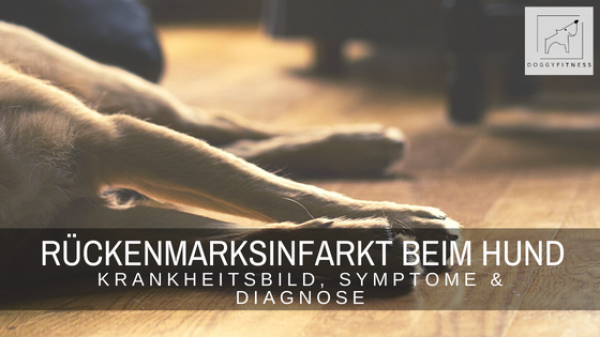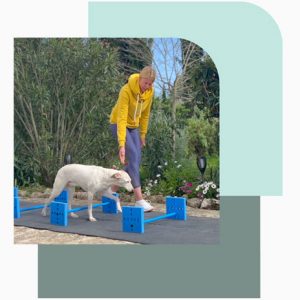It does not always have to be a slipped disc behind it, if it comes with a dog from a movement suddenly to a paralysis. Not infrequently, a spinal cord infarction – also called fibrocartilaginous embolism – is the cause. It is a degenerative and traumatic disease of the spine, more common in larger dogs and usually without pain. In contrast to a herniated disc, spinal cord infarction often affects younger or middle-aged quadrupeds. The average age is 6 years.
For reasons that have not yet been explained, degenerated disc material becomes detached and enters a blood vessel supplying the spinal cord. As a result, the vessel becomes blocked and part of the spinal cord is cut off from the blood supply and dies. Hemorrhage occurs. The infarct can occur at any site in the spinal cord. Accordingly, the neurological deficits can vary. Thus, the dog can be paralyzed “only” on the hind legs, as well as show paralysis of all four limbs.
Spinal cord infarction – diagnosis
The diagnosis of spinal cord infarction is made by exclusion. For this purpose, diseases such as spinal cord tumor, degenerative myelopathy, herniated disc, trauma, cauda equina compression syndrome and Wobbler syndrome must be excluded. Thus, a neurological examination course is elementary. A reliable diagnosis by CT or MRI is not possible. Especially in the highly acute stage, an MRI may even be absolutely unremarkable.
Symptoms and disease course of spinal cord infarction
Suddenly and usually inexplicably, acute paralysis usually occurs from a movement. Mostly thoracic and lumbar spine areas are affected, more rarely the cervical spine – area. Loss of sensitivity occurs and urinary and fecal incontinence are also possible.
In just under half of the cases, greater physical exertion in the hours before was reported. In the first hours after the infarction, the dog may have pain and further deterioration may occur. After that, the status usually remains stable and the dog is no longer in pain.
In mild infarction, neurologic deficits may improve on their own within the first 1-2 days. Depending on how much spinal cord is affected by the infarction, all symptoms may resolve. However, paralysis may remain.
Treatment options for spinal cord infarction
Prompt treatment of a spinal cord infarction is very important. The sooner you treat the dog, the greater the chance that the paralysis symptoms will completely resolve. As a rule, treatment is carried out with anti-inflammatory and pain-relieving drugs – especially in the acute phase.
In addition, it is elementarily important for the patient to receive physiotherapeutic treatment as soon as possible.
In the next article, you’ll learn how to help your dog with physical therapy for spinal cord infarction and get helpful behavior tips.
All the love, your Tina
Dieser Beitrag ist auch verfügbar auf:
Français (French)
Deutsch (German)
Español (Spanish)
















